Car Sales
Fuel Prices: New Car?
It’s unfortunate to see that the prices for fuel in Australia have been on the steady increase across. Retailers suggest that the increase in the cost of fuel has come about through record oil prices and new logistical challenges for acquiring the fuel. It’s definitely worth shopping around to ensure that you can get the best price on your fuel at the pump, as prices do differ from retail outlet around town and across States.
Just recently, regular unleaded petrol (91) had a national average of $2.14 per litre, yet the cheapest was found in Carnarvon, Western Australia, where it was sold for $1.59 per litre. The most expensive was located in Derby, Western Australia, where (91) was seen being sold for $2.42 per litre. The same trend is occuring for (95), (98), (E10), and Diesel.
As for how long these high fuel prices will continue to last, fuel industry analysts say that it’s anyone’s speculation at the moment. Peter Khoury, NRMA spokesman, recently said: “These prices are completely off the scale, more than twice what [motorists] were paying in April 2020… We have no idea where we would set the ceiling at this point.”
It begs the question: Should a motorist that has to do quite a few kilometres each week look at purchasing a more fuel efficient car? The answer, I guess, is up to you. It depends on how tight your budget is. If you can afford a new car, or at least a second car that’s extra-miserly on fuel, then I’d say go for it – particularly if you’re having to do high mileages. Then again, if you are not travelling far each week, say to the shops and the occasional trip elsewhere, then staying with the car you have and keeping your travel to a minimum is probably the way to go at this stage, and we’ll sit tight and see where/when all this price rising will come to an end, revising it again in another few months.
You might be a motorist who needs to upgrade for various reasons including the rising fuel costs. In this case, being in the market for a new car and wanting to purchase a vehicle that delivers the best fuel-efficiency has to be a pivotal point of purchase for you. Here is a list of the most fuel-efficient vehicles in 2022 across numerous categories, something that you might find useful right now.
Note – Where “Diesel” hasn’t been mentioned after the model, assume that it’s “Petrol” version…
Small cars (Hatchbacks):
Toyota Yaris Hybrid Hatchback 3.3 litres/100 km
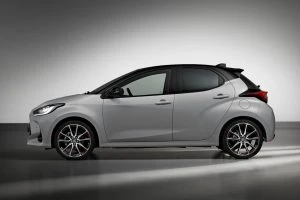
Toyota Yaris Hybrid Hatchback
Toyota Corolla Hybrid Hatchback 4.2 litres/100 km
Toyota Yaris Hatchback 4.9 litres/100 km
Mazda 2 Hatchback 5.3 litres/100 km
Toyota Corolla Hatchback 6.0 litres/100 km
Mazda 3 Hatchback 6.2 litres/100 km
MG3 Hatchback 6.7 litres/100 km
Hyundai i30 Hatchback 7.4 litres/100 km
Family & fleet (Sedans):
Toyota Camry Hybrid Sedan 4.7 litres/100 km
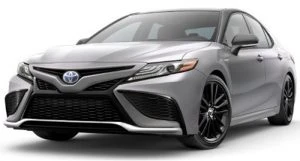
Toyota Camry Hybrid Sedan
Toyota Camry Sedan 6.8 litres/100 km
Small-Med SUV
Toyota RAV4 Hybrid 2WD 4.7 litres/100 km
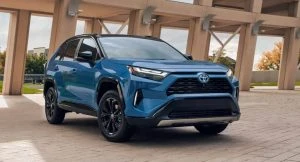
Toyota RAV4 Hybrid
Toyota RAV4 Hybrid AWD 4.8 litres/100 km
Mazda CX-3 2WD 6.3 litres/100 km
Mazda CX-30 2WD 6.5 litres/100 km
Toyota RAV4 2WD 6.5 litres/100 km
Mazda CX-5 2WD 6.9 litres/100 km
Toyota RAV4 AWD 7.3 litres/100 km
Mazda CX-5 AWD 7.4 litres/100 km
Mitsubishi Outlander 2WD 7.5 litres/100 km
Mitsubishi Outlander AWD 8.1 litres/100 km
Large SUV
Toyota Kluger Hybrid AWD 4.7 litres/100 km

Toyota Kluger Hybrid AWD
Hyundai Santa Fe AWD Diesel 6.1 litres/100 km
Kia Sorento AWD Diesel 6.1 litres/100 km
Toyota Prado 4WD Diesel 7.9 litres/100 km
Mazda CX-9 2WD 8.4 litres/100 km
Toyota Kluger 2WD 8.7 litres/100 km
Toyota Kluger AWD 8.9 litres/100 km
Toyota LandCruiser 300 Diesel 8.9 litres/100 km
Mazda CX-9 AWD 9 litres/100 km
Kia Sorento 2WD 9.7 litres/100 km
Hyundai Santa Fe 2WD 10.5 litres/100 km
Nissan Patrol Y62 14.4 litres/100 km
Ute
Nissan Navara STX 4WD Diesel 7.8 litres/100 km

Nissan Navara STX 4WD Diesel
Toyota HiLux SR5 4WD Diesel 8 litres/100 km
Ford Ranger XLT 4WD Diesel 8 litres/100 km
Isuzu D-Max XT 4WD Diesel 8 litres/100 km
Mazda BT-50 SP 4WD Diesel 8 litres/100 km
Mitsubishi Triton GLX+ 4WD Diesel 8.6 litres/100 km
Ford Ranger XLT 4WD Diesel 8.9 litres/100 km
LDV T60 Max 4WD 2.0L Diesel 9.2 litres/100 km
GWM Ute 4WD 2.0L Diesel 9.4 litres/100 km
Toyota HiLux Workmate 2WD 10.9 litres/100 km
Ram 1500 DS Limited 12.2 litres/100 km
Ram 1500 DT Express 12.2 litres/100 km
Chevrolet 1500 LTZ 12.8 litres/100 km
Van
Hyundai Staria Load van Diesel 7 litres/100 km
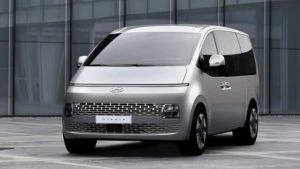
Hyundai Staria Load van Diesel
Ford Transit Custom van Diesel 7.3 litres/100 km
Toyota Hiace LWB van Diesel 8.2 litres/100 km
LDV G10 van Diesel 8.2 litres/100 km
LDV G10 van 11.1 litres/100 km
Toyota’s Hybrid vehicles, if they suit you needs, top their classes with fuel bills that were roughly half their nearest rivals. The Hybrid versions of the Toyota Yaris Hatch, the Toyota Corolla Hatch, the Toyota Camry Sedan, the Toyota RAV4 SUV, and the Toyota Kluger are the ones I’m talking about here.
Lightyear One – a Solar Powered EV

Lightyear One – a Solar Powered EV
In a country like Australia where the sun shines brightly for most of the year a car like the Lightyear One might be just the thing for getting around in. Sleek and comfortable, the Lightyear One is a solar-powered electric vehicle (EV) that has been designed and engineered in the Netherlands by Lightyear.
Having been recently tested in Italy, the Lightyear One completed 400 km on a single charge while driving at a constant speed of 130 km/h. According to Lightyear One’s manufacturer, regular driving will easily result in a range of 725 km (WLTP). If you’re like me and don’t know what WLTP means, then WLTP stands for Worldwide Harmonized Light-Duty Test Procedure. This mouthful is a new standard to measure fuel consumption, CO2 emissions, and range. The standard was introduced in 2017 and takes the measurements of test vehicles when driven in realistic driving situations to determine their fuel consumption, range, and emissions.
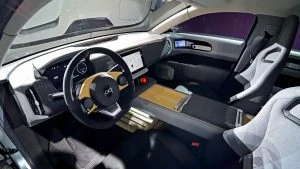
Lightyear One Interior
Because the Lightyear One is a solar-powered EV, its manufacturer also states that it would be possible to drive the car for months without needing to recharge. In Australia, where the sun shines most days of the year, a car like the Lightyear One would be perfect for this scenario. Take a good look at the car’s exterior and you’ll see the array of solar panels incorporated into the sleek exterior design. All of the panels facing skyward are made of solar panels and are ready for harvesting energy from the sun to charge the 60 kWh battery. 5 m2 of solar panels cover the Lightyear One’s roof, bonnet and tail and are capable of harnessing up to 12 km of range every hour. That means during a sunny 8-hour workday, a parked up Lightyear One could harvest 96 km of driving range – more than enough for most people’s work commutes. Even in cloudy conditions, its maker claims the Lightyear One that around 40 km of range can be harvested in that time. Obviously, you can also plug the car in for a quick recharge if you ever needed to.
Jump in the Lightyear One and drive on a full charge, and the Lightyear One’s 60 kWh battery pack provides a claimed 725 km of range, making it one of the most energy efficient EVs on the market. Efficiency of this standard is also achieved thanks to its construction consisting essentially of aluminium and carbon-fibre which gives it a weight of just 1315 kg. Also the car’s drag coefficient of just 0.20cd is sensational. As you can imagine, the aluminium and carbo-fibre underpinnings also drive the price of the car upward.
The Lightyear One is being manufactured in Finland, where its first deliveries will be made to Europe in mid-2022. The car’s price is around the AUD $238,000 mark. Just 946 of these cars will be built, however the company is already working on a more affordable solar-powered EV called the Lightyear Two which is expected to go on sale in 2024/25. It will have a much more affordable price, maybe even as low as AUD $50,000.
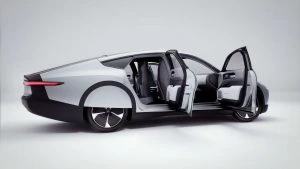
Lightyear One Sedan
In the Lightyear One there are 4 electric motors on board, one for each wheel. These provide the driving power. Together, they produce a combined 101 kW of power and 1200 Nm of torque. The car’s manufacturers say that the Lightyear One Sedan can seat 5 in comfort, and it has been designed especially for cruising and efficiency, and not for outright speed, thus claiming a 0-100 km/h sprint time of around 10 seconds.
I hope we see cars like this become available to people in Australia very soon. It also begs the question: Couldn’t the Holden name resurrect itself by Holden designers and engineers making a similar type of car in Australia for primarily Australians?
S to Z of Surfing Vehicles Dude
“Surfs up!”
“Dude, how am I gonna get there?”
“Bro, you need a car!”

Summer is here, and surfing is a great lifestyle for getting out, chasing the waves, and getting some immunity-boosting Vitamin D. In fact, any sort of outdoor adventure and exercise will see you a fitter and healthier person for getting out there and doing it. What 2022 cars make for an ideal surfer’s or outdoorsy-person’s companion? The following are several useful vehicles that will transport you, a friend or two, some gear, and surfboards/mountain bikes through something more than just a little puddle, mud or soft sand.
Dedicated vans or MPVs with AWD like the Volkswagen Multivan, LDV G10, Mercedes-Benz V-Class, Kia Carnival, Mercedes-Benz Valente, Volkswagen Caravelle, Honda Odyssey, Hyundai STARIA, Volkswagen California, Toyota Granvia, Mercedes-Benz Marco Polo ACTIVITY, and the Volkswagen Caddy are potentially great for surfing travels with one, two or more mates. Some, but not all, will offer AWD. Depending on how far down onto the beach you want to get your MPV or Van, AWD is definitely the way to go for ensuring you have a better chance of getting through soft sand and out of sticky situations.
For years, station wagons have been a go-to machine for the surfer; for good reason too as they offer plenty of space for lugging gear and for sleeping. Having a vehicle that can get you across country and down onto the beach makes for the ultimate surfer’s vehicle. Outside of the list of MPVs/vans above, there are some great vehicles worth a look if you’re into doing a bit of surfing, fishing and any other type of outdoor adventure.
Here is the best of them from S (Skoda) to V (Volvo). Let us know if we’ve missed anything in between!
Skoda Kodiaq
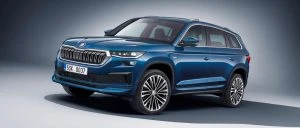
Arguably the best in the business is Skoda’s Kodiaq. It does everything a surfer wants very well. The 2.0-litre Turbo petrol engine is smooth and powerful. 4×4 capability is at the ready, and the Kodiaq Wagon boasts 7-seats and a 7 speed automatic 4×4 gearbox. A 132 kW/320 Nm turbo-petrol is under the bonnet of the base and Sportline variants. The punchy RS packs a 176 kW/500 Nm version of the 2.0-litre engine. The AWD-only Skoda not only offers 3 rows of seats, it is also able to open up 2005 litres of boot space. With standard autonomous emergency braking, adaptive cruise control, a seven-speed dual-clutch gearbox, active LED headlights and a cosy, suede-trimmed interior complete with sat-nav, keyless start, two-zone climate-control and side and rear-window blinds, the Skoda Kodiaq is one very impressive package.
Skoda Superb AWD Scout
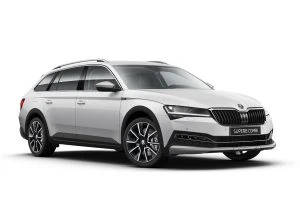
Grab yourself an AWD Skoda Superb Scout crossover wagon and surfing trips just got a whole lot nicer. Under the Scout’s bonnet sits a 200 kW/350 Nm, 2.0-litre turbo petrol engine with a seven-speed dual-clutch gearbox. The spacious, comfortable and high-quality cabin is laden with plenty of soft-touch panels and easy-to-read interfaces. Safety technology includes front and rear autonomous emergency braking, rear cross-traffic alert, lane departure warning with active assist, blind-spot monitoring and self-parking. The Superb Wagons will take 660 litres of luggage, expanding to 1950 litres with the rear seats folded. Towing capacity is rated at 2.2 tonnes.
SsangYong Rexton
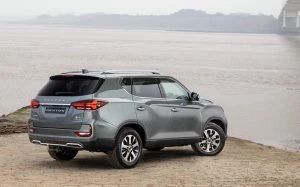
Here’s another strong contender for best surfing wagon. The seven-seater, five-star safe, 8-speed auto, 4×4, 2.2 Diesel-Turbo SsangYong Rexton large SUV uses a 149 kW/441 Nm 2.2-litre turbo-diesel that boasts less than 9 litres/100 km fuel economy. With, all-independent suspension, all-wheel disc brakes and an eight-speed auto gearbox, the big Korean-made SUV is equipped to go bush. Boot space is a handy 1806 litres with second and third rows flat.
Subaru Forester
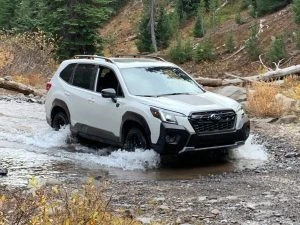
An icon in the surfing fraternity, the Subaru Forester always delivers the goods. 2022 sees the 5-door wagon offer a CVT 7-speed AWD with even autonomous emergency steering standard. This is five-star safe, great on sipping small amounts of fuel and comfortable on any surface of road. The Forester continues with the 136 kW/239 Nm 2.5-litre four-cylinder boxer engine, and the 2.0-litre mild-hybrid claims 6- to 7 litres/100 km. The Forester offers generous levels of passenger space, and the luggage capacity can open to 1768 litres with the rear seats folded. Of course, the Forester is known for going places that Physics suggest it shouldn’t. It is capable off-road, just keep in mind that it’s not a “Landie”!
Subaru Outback
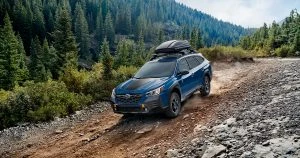
Surprise, surprise, here is another Subaru, and a favourite with surfers. The latest Subaru Outback is the newest of a long line of wagon’s that have carried surfboards and surfers all around the country. Subaru’s Outback is made for the surfer’s design brief, so it will happily go off-road, cruise the open road, accommodate a mattress and provide great accident protection. Five-star safe and comfortable to drive, the 5-door Outback Wagon uses a 138 kW/245 Nm 2.5-litre boxer petrol four-cylinder driving all four wheels through a new CVT transmission. Subaru’s Outback crossover is bigger inside and out, employs the company’s latest global platform and features all the latest safety technology. You can tow up to two-tonnes, and you have a boot with up to 2144 litres!
Toyota
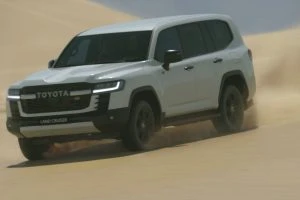
Plenty of choice in the Toyota brand. Take your pick out of the RAV4 (smallest), Kluger, Fortuner, Prado (largest), and Land Cruiser. All will get you far and beyond the tarmac, the Prado and Land Cruiser being truly 4×4 bush bashing capable. Comfortable, reliable, and safe. Boot space starts at around 1800 litres for the RAV4 and gets bigger from here.
Volkswagen Touareg
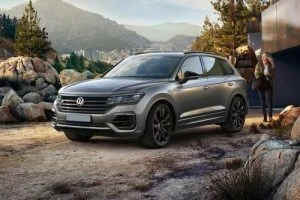
Good things come from VW, as surfers well know – the VW Kombi being a surfing icon. Well-dressed, big and brutish is what many of the ladies like, and the Volkswagen Touareg has it all. Available as a huge 5-door SUV shape, the Touareg boasts five-star safety, 4×4 competence, and a huge boot (over 1800 litres). Passenger space is right up there with the best in the business. It is available with a choice of three diesel engines: two 3.0-litre V6s – 170 kW/500 Nm (170 TDI) and 210 kW/600 Nm (210 TDI), plus a ruthless 310 kW/900 Nm 4.0-litre twin-turbo V8 monster.
VW Tiguan Allspace
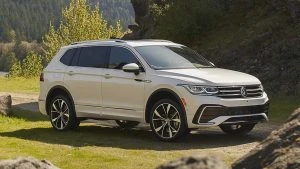
Over 2000 litres of boot space (Allspace version), a practical no-nonsense interior, 5-star safe, comfortable to drive, AWD availability, and the Tiguan starts to make sense. It is also another vehicle that has self-parking capability. With 4MOTION AWD and a dual-clutch six or seven-speed auto transmissions, the Tiguan is an impressive mid-size SUV. The choice of motors is good; a 110 kW/250 Nm 1.4-litre and 162 kW/350 Nm 2.0-litre petrol turbo is available along with the torquey and thrifty 147 TDI 147 kW/400 Nm turbo-diesel.
Volvo XC60
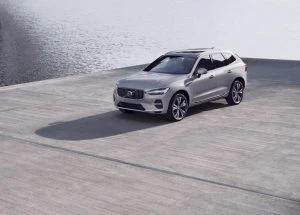
Volvos are amazing cars to drive. They are so comfortable, elegant, and boast all the best tech. Safety is a given, and the XC60 has up to 1792 litres of boot space. Five-door SUV styling, an 8-speed automatic with AWD and you’re away. Volvo’s XC60 SUV line-up is powered by petrol-only mild-hybrid 2.0-litre four-cylinder engines. The R-Design continues with the more powerful 220 kW/420 Nm B6 mild-hybrid powertrain while the Polestar Engineered sticks with the 311 kW/670 Nm T8 Twin Engine plug-in hybrid powertrain. Both are nice and responsive engines.
Volvo XC90
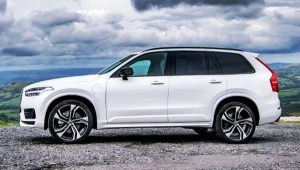
Even with all 7 seats in place, the Volvo XC90 boot can hold up to 302 litres of luggage. Folding down second and third rows makes way for 1856 litres. A superbly comfortable, AWD capable, and delivering huge safety credentials, the new Volvo XC90 is a luxury SUV like no other. All XC90s come with autonomous emergency braking, adaptive cruise control, lane-departure warning/assist, sat-nav, self-parking, AWD, an 8-speed automatic transmission and a fuel-saving idle-stop system. The XC90 D4 is powered by a 173 kW/480 Nm 2.0-litre four-cylinder turbo-diesel. The T6 petrol comes with a 140 kW/400 Nm 2.0-litre four-cylinder turbo-diesel. The 2.0-litre plug-in petrol-electric hybrid XC90 T8 claims an amazing 2.1 litres/100 km fuel consumption and slingshots to 100 km/h in 5.5 seconds!
K to R of Surfing Vehicles Dude
“Surfs up!”
“Dude, how am I gonna get there?”
“Bro, you need a car!”

Summer is here, and surfing is a great lifestyle for getting out, chasing the waves, and getting some immunity-boosting Vitamin D. In fact, any sort of outdoor adventure and exercise will see you a fitter and healthier person for getting out there and doing it. What 2022 cars make for an ideal surfer’s companion? The following are several useful vehicles that, if you’re wanting something to get you places, will transport you, a friend or two, some gear, and surfboards/mountain bikes through something more than just a little puddle, mud or soft sand.
Dedicated vans with AWD or MPVs are potentially great for surfing travels with one, two or more mates. Some, but not all, will offer AWD. Depending on how far down onto the beach you want to get your MPV or Van, AWD is definitely the way to go for getting through soft sand and sticky situations. Having a vehicle that can get you across country and down onto the beach makes for the ultimate surfer’s vehicle.
There are some very good vehicles worth a look if you’re into doing a bit of surfing, fishing and any outdoor adventure. Aside from an AWD Van or AWD MPV, here are the best of them from K (Kia) to R (Renault). Let us know if we’ve missed anything in between!
Kia Sorento

The seven-seat Kia Sorento SUV is one of the most advanced vehicles in its class. If you find parking a mean trick, then it can even park itself without anyone inside. Quiet, roomy and with a large boot, the Sorento is available in Sport, Sport+ and GT-Line and the choice of a front-drive 3.5-litre 200 kW/332 Nm V6 petrol with an eight-speed auto gearbox, an AWD dual-clutch auto 148 kW/440 Nm 2.2-litre four-cylinder turbo-diesel or a 190 kW/350 Nm PHEV. The roomy cabin is enhanced by a commodious 616-litre boot that increases to a massive, all-seats-folded 2011 litres.
Land Rover Defender

Ultimate 4×4 traction. The 2.0-litre D200, D240 and D250 diesels produce 147 kW/430 Nm, 177 kW/430 Nm and 183 kW/570 Nm respectively, while the petrol engines output 221 kW/400 Nm, 294 kW/550 Nm and 386 kW/625 Nm. All Defenders are highly capable, dual-range 4x4s, all driving through an eight-speed auto gearbox. Up to 2231 litres of boot space gives you plenty of space to sleep! 5-star safe.
Land Rover Discovery

Ultimate 4×4 traction with added sophistication. Of course, the Range Rover alternative is luxury to the max! Discoverys are big on comfort and refinement and offer up to 2104 litres of sleeping space. 5-star safe.
LDV D90

A big, cushy, well-priced 7-seater with 5-doors. Sitting on a strong ladder-frame chassis and boasting a punchy 160 kW/480 Nm, 2.0-litre bi-turbo-diesel with an eight-speed auto transmission this is a seriously decent machine. Offering rear-drive or dual-range 4WD with multi-mode terrain selection, off-roading is a breeze. 5-star safe and providing up to 2382 litres of sleeping space.
Mahindra XUV500 W10

A 7-seater with 5 doors and a 6-speed auto, the Mahindra XUV500 SUV is one of the best-value mid-size seven-seaters in Australia. It is powered by a 103 kW/320 Nm 2.2-litre turbo-petrol engine. AWD form is the best version and performs well off-road. Let down only by a 4-star safety rating, the Mahindra has over 700 litres of boot space with the third row seats flat and grows to an excellent mattress in the back material. You also get a five-year/100,000km warranty with five years of roadside assist when bought new.
Mitsubishi Outlander

Mitsubishi’s fourth generation Outlander SUV is a roomy 5-door wagon that is comfortable to drive, has all the modern tech, offering its owner plenty of space. Available in AWD, running with an 8-speed CVT gearbox, and using the new 135 kW/245 Nm 2.5-litre engine this is a reliable unit that will take you and your mates places. Boot space is up to 1461 litres, safety is 5-star, and you also get Mitsubishi’s class-leading 10 year/200,000 km warranty.
Mitsubishi Pajero Sport

Another highly rated surfer’s wagon, the 2022 Mitsubishi Pajero Sport Wagon. With its 8-speed automatic gearbox is smooth. It’s a dual-range unit with Low and High, so 4×4 traction combines with a high ground clearance and long-travel suspension to ensure plenty of off-road capability. There’s heaps of passenger space and it’s surprisingly smooth and comfortable on the road. The Pajero Sport is available in both five and seven-seat form and is powered by a 2.4-litre, 4-cylinder turbo-diesel producing 133 kW/430 Nm. 5-star safety and a boot space that’s huge. The Pajero Sport boasts a big, square cargo space and boasts 673-litres of cargo volume even up to the second row. Fold the second row down as well and it’s cavernous.
Nissan X-Trail

The sharp-looking Nissan X-Trail is a real surfer’s choice. Nissan’s X-Trail continues to rate among the best cargo-carriers in its class. It feels nifty on the road and is five-star safe. The AWD version uses a naturally-aspirated petrol engine with 126 kW/233 Nm. Boot space is huge and close to 2000 litres, enough to lie down and stretch your legs out overnight.
Renault Koleos

A pretty cool looking wagon is the new Koleos from Renault. Nissan’s X-Trail and Renault’s Koleos have teamed up and are based on the same platform. Five-star safe and superbly comfortable, Renault’s five-seat Koleos mid-size SUV combines attractive looks and excellent people and luggage-carrying abilities. There’s a choice, at the top-level for 4WD, and the 126 kW/226 Nm 2.5-litre petrol engine drives through a modern CVT transmission. Boot space is almost 2000 litres!